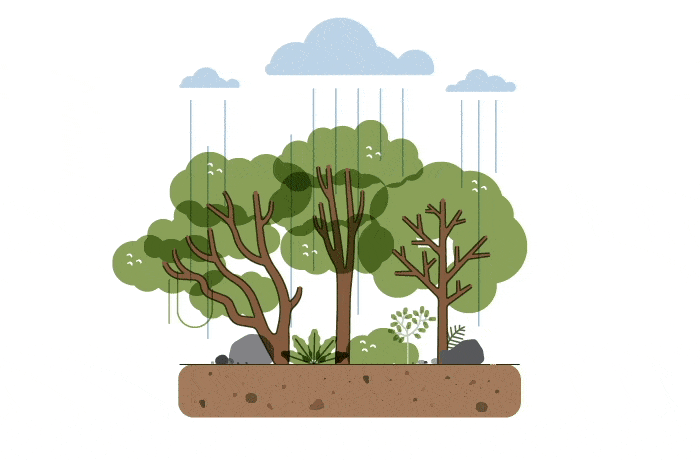Formed out of organic material
Peatlands is developed from the accumulation of organic material which did not decompose perfectly
Peat soil has specific characteristics different from mineral soils in general. These characteristics can be viewed from the physical, chemical and biological properties of the soil.
Peatlands is developed from the accumulation of organic material which did not decompose perfectly
Mineral soil is developed from rocks which had undergone physical and chemical decomposition
Peatlands is highly porous, between 70%-90%
Mineral soil is not as porous as peat, between 48%-70%
Peatlands is acidic with a pH of < 4
Mineral soil is neutral with a pH of 7
Peatlands is low in macro (P, K, Ca, and Mg) and micro (Cu, Zn, Mn, and Fe) nutrients
Mineral soil has more macro and micro nutrients

Peatlands has the ability to absorb and direct water from 100% to 1,300% from its dry mass

Mineral soil only has the ability to absorb and direct water from 20% to 35% from its dry mass
Peatlands has the ability to store carbon around 18%-60% from its dry mass
Mineral soil only has the ability to store carbon around 0.5%-5% from its dry mass
Peatlands is developed from the accumulation of organic material which did not decompose perfectly
Peatlands is highly porous, between 70%-90%
Peatlands is acidic with a pH of < 4
Peatlands is low in macro (P, K, Ca, and Mg) and micro (Cu, Zn, Mn, and Fe) nutrients

Peatlands has the ability to absorb and direct water from 100% to 1,300% from its dry mass
Peatlands has the ability to store carbon around 18%-60% from its dry mass
Mineral soil is developed from rocks which had undergone physical and chemical decomposition
Mineral soil is not as porous as peat, between 48%-70%
Mineral soil is neutral with a pH of 7
Mineral soil has more macro and micro nutrients

Mineral soil only has the ability to absorb and direct water from 20% to 35% from its dry mass
Mineral soil only has the ability to store carbon around 0.5%-5% from its dry mass
Peatlands are formed from organic materials such as organic waste from tree branches, tree roots, and logs that do not fully decompose so that they accumulate and form layers of peat.
Peatlands are highly unique as they have a very high level of water absorption. Peat has the ability to absorb and distribute water at 100% to 1300% of its dry weight, when mineral soils are only able to absorb 20% - 30%. This is due to the fact that the pores of the peat soil are very large, and water can be absorbed easily.
In addition, the partial decomposition process as a result of anaerobic (no oxygen) conditions causes peat to store very high levels of carbon. Peatlands have a much higher capacity to store carbon (18-60% of its weight) than mineral soils (0.5-5% of weight).
However, because acidity level in peatlands is very high (pH<4), macro and micro nutrients (P, K, Ca, Mg, Cu, Zn, Mn, and Fe) are low. As a result, the fertility level of peatlands is lower compared to mineral soils. Only certain types of plants can grow on peatlands.